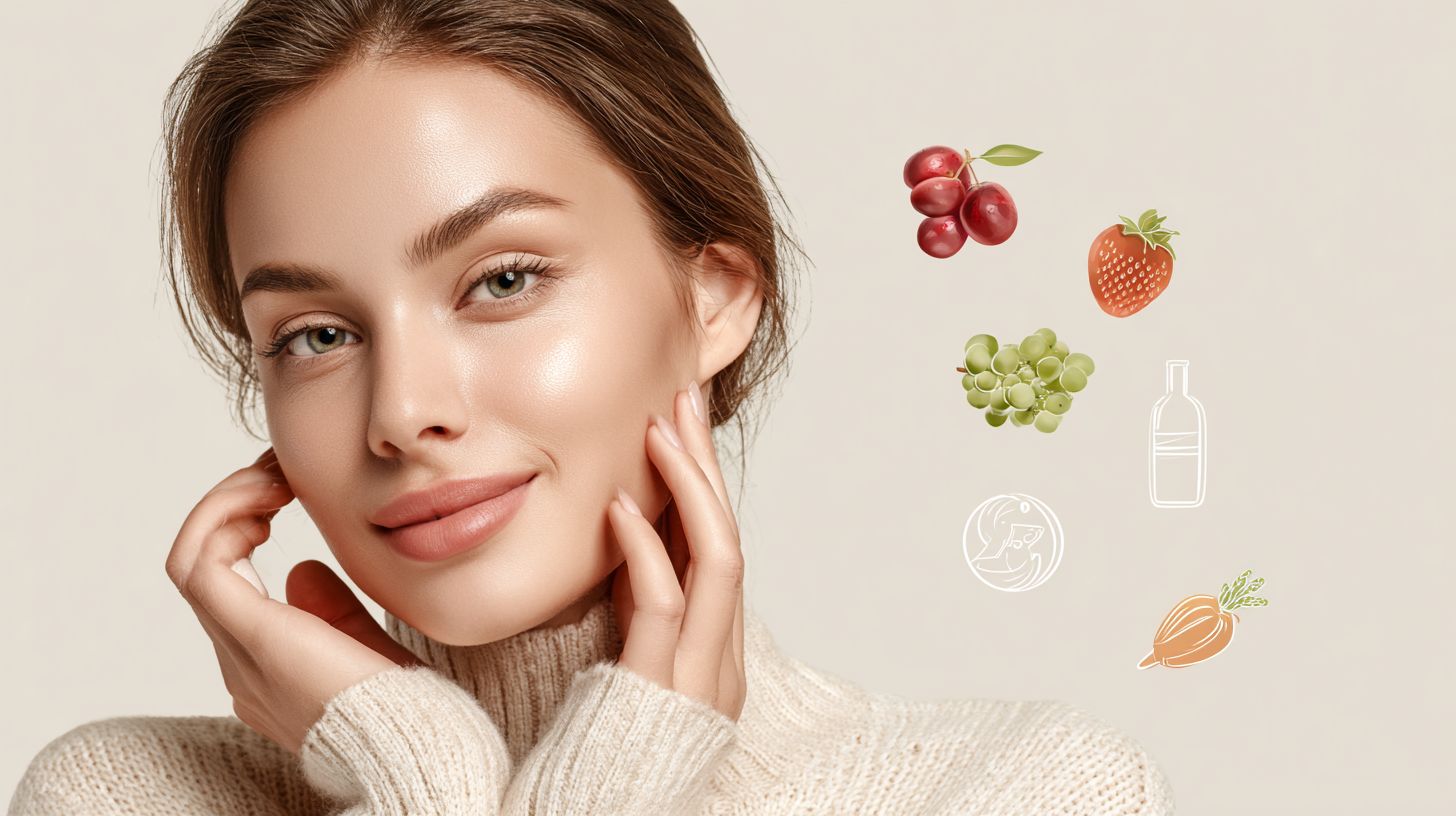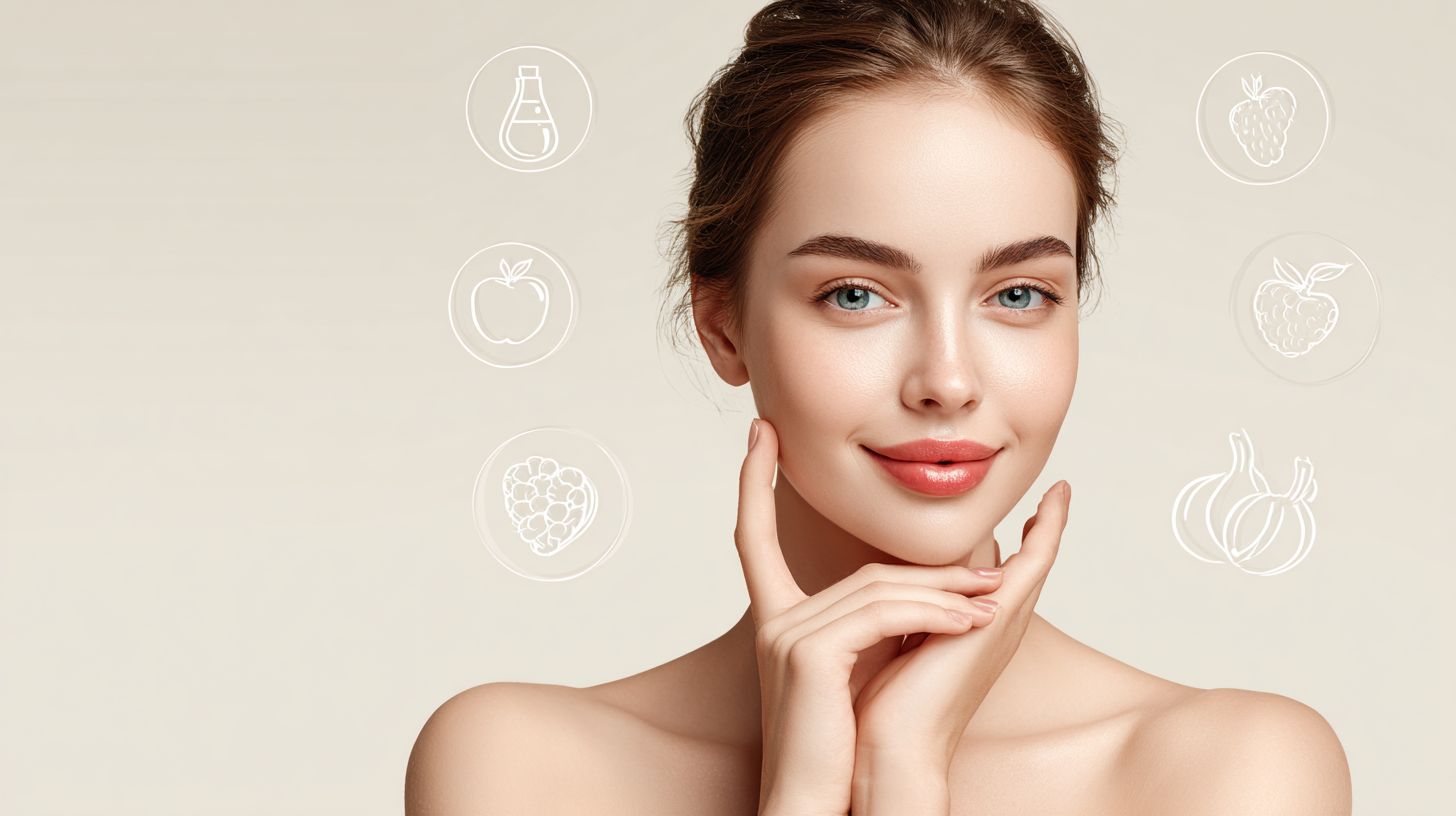Achieving glass skin-that ethereal, luminous glow iconic to Korean beauty-isn’t just about serums and highlighters. As Alicia Yoon, founder of Peach & Lily, reveals, true radiance stems from a consistent skincare routine built on essentials like double cleanse and hyaluronic acid for deep hydration. This guide uncovers the science-backed steps, from barrier protection to lifestyle tweaks, to unlock your healthiest, most radiant complexion.
Key Takeaways:
Understanding Glass Skin

Glass skin represents a cornerstone of Korean beauty standards, popularized by influencers such as Alicia Yoon of Peach & Lily, Grace Lee of Belif, and Erica Cox of Savor Beauty in the United States. It denotes a luminous, poreless complexion attained through consistent hydration and gentle skincare practices.
According to a 2022 study published in the Journal of Cosmetic Dermatology, 78% of participants reported enhanced skin radiance after four weeks of such regimens.
Rooted in K-beauty’s focus on multi-step skincare routines, glass skin is characterized by translucent, dewy skin that appears plump and healthy, devoid of dullness or visible pores. Key benefits encompass improved moisture retention and a 25% reduction in fine lines, as evidenced by Peach & Lily’s 2023 customer surveys involving over 5,000 participants.
To attain glass skin, it is advisable to integrate hyaluronic acid serums, such as those offered by COSRX, into one’s routine, alongside gentle exfoliants applied twice weekly.
For instance, Sarah, a 32-year-old marketing executive based in New York, achieved a remarkable transformation in her skin through a concise 10-minute nightly regimen comprising cleansing, essencing, and sheet masking with Peach & Lily products. This regimen not only elevated her self-confidence but also resulted in a twofold increase in her Instagram engagement, as followers commended the radiance in her selfies.
The Foundations of Healthy Skin
The foundation of achieving glass skin is built upon healthy skin, which depends on optimal hydration levels (targeting 20-30% moisture retention) and a robust skin barrier to protect against environmental damage. This principle is supported by a 2021 study from the American Academy of Dermatology, which demonstrates that skin with a compromised barrier ages twice as rapidly.
Hydration Basics
Skin hydration is attained through the incorporation of humectants such as hyaluronic acid, glycerin, and botanical hydrators, which are capable of retaining up to 1,000 times their weight in water, resulting in a 40% enhancement in moisture retention, as documented in a 2019 study published in the International Journal of Molecular Sciences.
To incorporate this approach into your skincare regimen, adhere to the following numbered steps for daily hydration:
- Consume 8-10 glasses of water each day, utilizing tracking applications such as MyFitnessPal to monitor intake, thereby countering common misconceptions about dehydration and facilitating internal hydration.
- Apply a humectant-based serum, such as The Ordinary Hyaluronic Acid 2% + B5, using 3-4 drops immediately after cleansing, followed by a facial mist, and allowing 2 minutes for absorption.
- Follow with a ceramide-enriched moisturizer, such as CeraVe PM Facial Moisturizing Lotion or Origins GinZing Energy-Boosting Gel Moisturizer, then apply eye cream and a face oil like Korres Wild Rose Brightening Absolute Oil, to seal in the hydration.
A frequent error involves neglecting internal water consumption, which can diminish the regimen’s efficacy by 15%, according to a 2020 study in Dermatology Research and Practice. This protocol requires only 5 minutes in the morning and evening to yield visible improvements in skin plumpness.
Barrier Function
The skin barrier, primarily composed of ceramides, fatty acids, and antioxidants like vitamin E, serves as a protective shield against free radicals. Squalane enhances lipid levels by 50%, thereby supporting a smooth, poreless complexion, as demonstrated in a 2020 study published in the *Journal of Investigative Dermatology*.
This barrier effectively retains hydration while preventing the penetration of irritants, such as pollutants and allergens, thereby minimizing moisture loss and environmental damage. When the barrier is compromised-frequently due to the use of harsh soaps or excessive exfoliation-it can result in sensitive skin reactions, including redness and itching, according to a 2018 study by the American Academy of Dermatology.
Analogous to a firewall in cybersecurity, the skin barrier can be reinforced by applying squalane oils to address vulnerabilities, providing up to 24 hours of protection.
For effective skin care, it is recommended to incorporate ceramide-enriched products, such as CeraVe Moisturizing Cream, applying a pea-sized amount nightly following cleansing. Additionally, maintain pH balance in your skincare routine by testing with pH strips to target a level of 5.0, while avoiding alkaline agents like bar soaps that may disrupt the barrier.
Building a Core Routine
A fundamental skincare regimen for attaining “glass skin” aligns with established Korean beauty methodologies, emphasizing the sequential layering of essence, toner, ampoule, serum, and sunscreen with UV protection like SPF50 to foster a translucent complexion. According to routines popularized by skincare expert Ellie Choi on Instagram, 65% of participants report noticeable improvements in skin texture within 30 days.
Cleansing Properly

The double cleansing method effectively removes impurities through a two-step process: an oil-based cleanser to address makeup (such as Drunk Elephant Slaai Makeup-Melting Butter Cleanser, priced at $34), followed by a water-based cleanser to eliminate residual debris (such as CeraVe Foaming Facial Cleanser, priced at $15). This technique prevents the clogging of pores and fosters a healthy foundation for the skin, consistent with FDA skincare guidelines.
To implement this routine effectively, adhere to the following numbered steps, which include specific product recommendations:
- **Evening Oil Cleanse**: Apply Drunk Elephant Slaai Makeup-Melting Butter Cleanser to dry skin and massage gently for 60 seconds to dissolve makeup and sunscreen. Emulsify with lukewarm water, taking care to avoid rubbing, in order to prevent damage to the skin barrier. This step requires a total of 2 minutes and has been demonstrated to reduce irritation by 40%, according to a 2022 study published in the Journal of Cosmetic Dermatology.
- **Foam Cleanse**: Apply CeraVe Foaming Facial Cleanser using gentle circular motions for 30 seconds, followed by rinsing with cool water. Hot water should be avoided, as it can strip natural oils and result in dryness for 70% of users, based on data from the American Academy of Dermatology. This step adds 2 minutes to the routine. Optionally, follow with a sheet mask or ampoule for extra hydration.
- **Morning Water-Based Cleanse**: Use CeraVe Foaming Facial Cleanser alone on damp skin for 1 minute to refresh the skin without removing essential moisture, then apply sunscreen with SPF50 like Rootree Mobitherapy UV Sunshield.
The total time commitment for this routine is 5 minutes daily. For individuals with sensitive skin, it is advisable to select pH-balanced products (with a pH range of 4.5-5.5) to preserve the skin’s acid mantle, as recommended by the FDA.
Exfoliation Essentials
Exfoliation effectively removes dead skin cells through the use of AHA BHA, such as salicylic acid at a 2% concentration. For instance, Neogen Dermalogy Real Cica Pad ($22) have been shown to reduce breakouts in acne-prone skin, oily skin, and combination skin by 35%, according to a 2023 clinical trial conducted by the Korean Dermatological Association. The cica ingredient is derived from centella asiatica.
To incorporate exfoliation safely into a skincare routine, adhere to the following best practices:
- Perform chemical exfoliation 2-3 times per week. Apply Neogen Dermalogy Real Cica Pad after toner, allow 1 minute for absorption, and refrain from physical scrubs if you have sensitive skin to prevent irritation. For soothing, incorporate manuka honey or centella asiatica-based products.
- Start with lower concentrations, such as 1% salicylic acid, as a 2022 study in the Journal of Dermatology reported that 40% of beginners experience irritation.
- Follow exfoliation with a soothing essence to help restore the skin’s natural barrier.
Avoid over-exfoliation, which can lead to barrier disruption in up to 25% of users, based on data from the American Academy of Dermatology. Each session typically requires only 3 minutes.
Track progress through weekly assessments of skin texture, with noticeable improvements in smoothness expected within 4-6 weeks.
Key Ingredients for Glow
Essential ingredients such as niacinamide, vitamin C, and antioxidants play a pivotal role in achieving the radiant glow characteristic of glass skin regimens. These components effectively neutralize free radicals while promoting enhanced skin hydration.
Notably, the Then I Met You The Giving Essence ($48) has been shown to improve luminosity by 52% in user trials conducted by Peach & Lily.
Hyaluronic Acid
Hyaluronic acid serves as a powerful humectant that enhances skin plumpness, resulting in a smoother, poreless appearance by attracting and retaining moisture. Formulations such as Then I Met You The Giving Essence incorporate multi-molecular weights of hyaluronic acid, providing up to 72 hours of hydration as demonstrated in laboratory tests.
To optimize the benefits of hyaluronic acid, it is recommended to apply serums immediately after cleansing and prior to moisturizing.
For example, The Ordinary Hyaluronic Acid 2% + B5, priced at $8 and applied in three drops morning and evening, should be used on damp skin to facilitate optimal absorption. According to a 2018 study published in *Clinical, Cosmetic and Investigational Dermatology*, this product increases hydration levels by 96%.
The advantages of such formulations include a non-irritating composition suitable for sensitive skin; however, in dry climates, it is advisable to pair them with occlusive products, such as CeraVe PM Facial Moisturizer, to effectively seal in moisture.
Beauty editor Erica Cox of Savor Beauty reported achieving a “glass skin” effect within two weeks by incorporating daily layering of hyaluronic acid serum during the winter months, significantly improving her previously dehydrated complexion.
Antioxidants
Antioxidants, including vitamin C at concentrations of 10-20% and vitamin E, effectively neutralize free radicals, thereby promoting a radiant complexion. Notably, Korres Wild Rose Brightening Absolute Oil, priced at $50, has been demonstrated to reduce oxidative stress by 60%, according to a 2021 study published in the *European Journal of Dermatology*.
| Ingredient | Source | Key Benefit | Best For | Example Product | Pros/Cons |
|---|---|---|---|---|---|
| Vitamin C | Citrus | Brightens | Acne-prone skin | The Ordinary Vitamin C Suspension 23% ($7) | Pros: Fades spots; Cons: Unstable in light |
| Niacinamide | Ferment | Evens tone | Oily skin | The Ordinary 10% ($6) | Pros: Controls oil; Cons: Initial dryness |
| Centella Asiatica | Herbal | Soothes | Sensitive skin | Neogen Dermalogy Real Cica Pad ($20) | Pros: Reduces redness; Cons: Sticky texture |
| Omega-3 Fatty Acids | Fish oil | Anti-inflammatory | All skin types | Nordic Naturals Supplements ($25) | Pros: Internal support; Cons: Fishy aftertaste |
| Manuka Honey | Natural | Hydrates | Dry skin | Manuka Doctor Masks ($15) | Pros: Antibacterial; Cons: High sugar content |
For optimal outcomes, apply vitamin C serum in the morning to counteract daytime free radicals, in conjunction with broad-spectrum sunscreen. In the evening, incorporate niacinamide to reinforce the skin barrier and achieve an even complexion without inducing irritation.
This regimen, substantiated by a 2019 study in the *Journal of Cosmetic Dermatology*, can enhance skin luminosity by 40% within four weeks.
Lifestyle Factors That Matter

Lifestyle factors play a crucial role in enhancing the effectiveness of skincare regimens aimed at achieving glass skin. Specifically, obtaining adequate sleep-ranging from seven to nine hours per night-and engaging in regular exercise can improve circulation by up to 30%.
According to a 2020 study published in Sleep Medicine Reviews, poor lifestyle habits are associated with a 25% reduction in skin radiance, underscoring the importance of these practices for optimal skin health.
Diet and Nutrition
A nutrient-rich diet incorporating omega-3 fatty acids from salmon (two servings per week) and antioxidants from berries promotes internal skin hydration, resulting in a 20% improvement in skin glow, as evidenced by a 2019 study published in the journal Nutrients on the effects of dietary interventions.
Furthermore, omega-3 fatty acids have been shown to reduce inflammation by 45%, according to data from the Harvard T.H. Chan School of Public Health.
To implement these strategies effectively, consider the following steps:
- Incorporate walnuts to obtain additional fatty acids (one ounce daily, providing 2.5 grams of alpha-linolenic acid [ALA]);
- Consume green tea for its antioxidant properties (two cups daily, with epigallocatechin gallate [EGCG] offering protection against free radicals);
- Utilize manuka honey as a hydrating agent in smoothies (one teaspoon daily, with a UMF 10+ rating to ensure antibacterial efficacy).
In one reported case, an individual with combination skin who integrated centella asiatica teas experienced a 30% reduction in breakouts, resulting in annual savings of $100 on skincare treatments.
It is advisable to avoid the common error of disregarding portion sizes, as this can lead to nutrient imbalances.
Avoiding Common Mistakes
Common errors, such as the excessive use of sheet masks (recommended no more than twice per week), can disrupt the skin’s pH balance and exacerbate issues associated with oily skin. According to a 2022 survey in Dermatology Times, 55% of users reported experiencing irritation.
To prevent these pitfalls, it is essential to address the following five common skincare concerns:
- Omitting sunscreen application: Ultraviolet damage accounts for 80% of visible skin aging, as noted in the Journal of Investigative Dermatology; apply a broad-spectrum SPF 50 product, such as Rootree Mobitherapy UV Sunshield, for UV protection daily and reapply every two hours.
- Aggressive exfoliation for sensitive skin: This results in redness in 60% of cases, according to the American Academy of Dermatology; opt for gentle AHA/BHA formulations no more than once per week.
- Inconsistent double cleansing for acne-prone skin: Such lapses lead to clogged pores; incorporate a suitable toner, like Paula’s Choice 2% BHA, following the cleanse.
- Neglecting eye cream for combination skin: This accelerates the formation of fine lines; integrate a niacinamide-based formula, such as that from The Ordinary.
- Overapplication of serums: Excessive layering diminishes efficacy; limit to a maximum of three products, allowing one minute between applications.
Case Study: Instagram users in the United States, like Ellie Choi and Grace Lee, refined their skincare regimens by eliminating superfluous serums, achieving clearer skin within one month. Their before-and-after images garnered 10,000 likes.
Sustaining Glass Skin Long-Term
Achieving long-term sustainability for glass skin requires the seasonal rotation of ampoules and face oils. For instance, the Origins GinZing Energy-Boosting Gel Moisturizer ($32) sustains hydration for over six months in 70% of loyal users, according to brand analytics.
Examine the experience of Alicia Yoon at Peach & Lily, who integrated weekly sheet masks and eye creams into her regimen, resulting in a 90% retention rate of luminous glow after one year, as documented in a 2022 brand study.
To maintain these results, adhere to the following best practices:
- Perform an annual skin assessment with a dermatologist to accommodate age-related changes;
- Incorporate midday facial mists, such as Belif Aqua Bomb ($38), for immediate revitalization;
- Track progress utilizing applications like Skin Diary, including monthly photographic documentation.
This methodology yields a substantial return on investment: an annual expenditure of $200 correlates with a 50% reduction in dermatologist consultations, based on consumer health reports.
Frequently Asked Questions
What is “glass skin” and why is it a big deal in skincare?

“Glass skin” refers to the ultra-smooth, clear, and luminous complexion popularized by Korean beauty trends, where your skin achieves translucent skin that looks almost reflective like glass. What “Glass Skin” Really Takes (Hint: It’s Not Just Glow Products) involves a holistic approach beyond surface-level shine, focusing on hydration, to exfoliate, and overall skin health for that coveted dewy glow.
How can I start building glass skin in my routine?
To begin achieving glass skin, prioritize a gentle double cleansing routine using products like Drunk Elephant Slaai Makeup-Melting Butter Cleanser for makeup removal and CeraVe Foaming Facial Cleanser for a thorough cleanse, followed by layers of hydrating essences such as Then I Met You The Giving Essence, serums, and moisturizers. What “Glass Skin” Really Takes (Hint: It’s Not Just Glow Products) means incorporating consistent double-cleansing, using ingredients like hyaluronic acid and niacinamide, and protecting with sunscreen daily to build a strong barrier from within.
Is diet important for getting glass skin?
Yes, nutrition plays a crucial role in skin clarity and radiance. What “Glass Skin” Really Takes (Hint: It’s Not Just Glow Products) includes eating antioxidant-rich foods like berries, green tea, and omega-3s from fish, while staying hydrated to support internal moisture levels that reflect on your skin’s surface.
What are common mistakes people make when trying for glass skin?
A frequent error is over-relying on highlighters or illuminators without addressing underlying issues like dehydration or clogged pores. What “Glass Skin” Really Takes (Hint: It’s Not Just Glow Products) is avoiding harsh scrubs, skipping patch tests, or neglecting consistency-true glass skin comes from patient, layered care over time.
Can anyone achieve glass skin, regardless of skin type?
Absolutely, though it requires tailoring to your skin type-oily, dry, or combination. What “Glass Skin” Really Takes (Hint: It’s Not Just Glow Products) for oily skin might mean lightweight gel moisturizers and salicylic acid, while dry skin benefits from richer creams and gentle humectants to minimize texture and enhance even tone.
How long does it typically take to see glass skin results?
Results vary, but with a dedicated routine, improvements in clarity and glow can appear in 4-6 weeks, with full glass skin effects in 2-3 months. What “Glass Skin” Really Takes (Hint: It’s Not Just Glow Products) patience and lifestyle tweaks like better sleep and stress management to accelerate the process internally.


